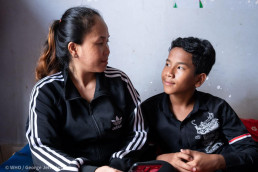Introduction:
In an era where technology plays an increasingly prominent role in education, the rise of artificial intelligence (AI) applications, such as ChatGPT, has sparked a significant debate about their impact on children’s learning. While AI has the potential to enhance educational experiences, there are concerns that ChatGPT, a sophisticated language model developed by OpenAI, poses certain dangers that may hinder rather than facilitate the learning process for children.
-
Lack of Discernment:
One of the primary concerns with ChatGPT in educational settings is its inability to discern appropriate content for children. The model generates responses based on patterns it learned during training, which may include inappropriate or biased language. This poses a risk of exposing children to content that is not suitable for their age group, potentially leading to misinformation or even harm.
-
Limited Understanding of Educational Pedagogy:
ChatGPT lacks a deep understanding of educational pedagogy, making it challenging to tailor responses to the specific needs of individual learners. Unlike human teachers who can adapt their teaching styles based on a student’s progress and comprehension, ChatGPT may struggle to provide personalized and effective learning experiences for children.
-
Reinforcement of Biases:
AI models like ChatGPT are trained on vast datasets that may inadvertently contain biases present in real-world data. When children interact with ChatGPT, there is a risk of reinforcing and perpetuating these biases. This could impact their worldview, potentially leading to distorted perceptions and attitudes based on biased information.
-
Detrimental Effects on Social Skills:
Interacting with ChatGPT may diminish the development of crucial social skills in children. Effective communication, empathy, and emotional intelligence are best learned through human interaction. Relying on AI models for communication may hinder the natural development of these skills, which are essential for success in both academic and real-world settings.
-
Substitution for Human Teachers:
While AI can complement traditional teaching methods, relying too heavily on ChatGPT may lead to the substitution of human teachers. The dynamic and personalized nature of human interaction in education cannot be fully replicated by an AI model. Children benefit from the guidance, mentorship, and emotional support that human educators provide, which AI cannot replace.
Conclusion:
While the potential of AI in education is vast, the use of ChatGPT in learning environments for children must be approached with caution. The risks of exposing children to inappropriate content, reinforcing biases, hindering social skill development, and substituting human teachers raise valid concerns. As technology continues to evolve, it is crucial to strike a balance between leveraging AI for educational enhancement and preserving the irreplaceable qualities of human educators in fostering well-rounded and socially adept learners.



